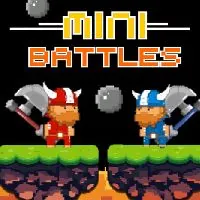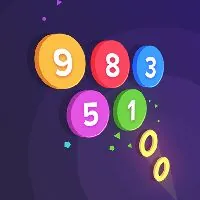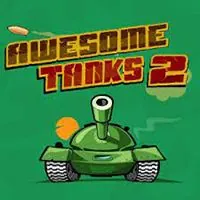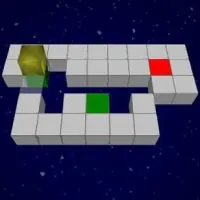HIDE AND SMASH
SIMILAR GAMES
Description
Hide And Smash - GitLab Games
About Hide And Smash - GitLab Games
In the dynamic and ever-evolving world of software development and collaborative projects, the need for engaging and innovative team-building activities is paramount. GitLab Games presents a unique opportunity for teams to connect, compete, and foster a spirit of camaraderie through a series of carefully designed challenges. Among these, "Hide and Smash" stands out as a particularly captivating experience, blending strategic thinking with playful competition. This game, meticulously crafted within the GitLab ecosystem, is designed to enhance communication, problem-solving skills, and overall team cohesion. We delve into the intricacies of Hide and Smash, exploring its core mechanics, the strategic depth it offers, and its profound impact on team dynamics within the GitLab community and beyond. Our aim is to provide a comprehensive understanding of this exciting game, illustrating why it has become a cornerstone of GitLab's innovative approach to team engagement.
Understanding the Core Mechanics of Hide and Smash
Hide and Smash is an ingenious game that challenges participants to leverage their understanding of the GitLab platform in a novel and entertaining way. At its heart, the game revolves around a simple yet profound premise: hiding virtual "items" within the GitLab repository structure and then tasking other team members or opposing teams to "smash" or locate these hidden elements. The "items" can range from specific lines of code, configuration files, documentation snippets, or even designated commit messages. The act of "smashing" involves precise identification and retrieval of these hidden elements, often requiring detailed knowledge of file paths, commit histories, and code patterns. The complexity can be scaled, allowing for beginner-friendly rounds or highly sophisticated challenges that test the mettle of even seasoned GitLab users. Success in Hide and Smash hinges on a delicate balance of stealth and investigative prowess, making it a truly engaging proposition for any team.
The Strategic Layer: Hiding Techniques
The art of hiding in Hide and Smash is as crucial as the art of smashing. Participants are encouraged to be creative and cunning in their placement of virtual items. This involves understanding not just the obvious locations within a repository but also the less apparent corners. Advanced hiding techniques might include:
- Obfuscating in Plain Sight: Placing the item within a large, otherwise innocuous file, making it difficult to spot amongst many lines of code or text.
- Leveraging Commit History: Hiding an item in an older commit and then making subsequent changes that obscure its original presence, requiring participants to delve deep into the commit log.
- Utilizing Branching Strategies: Hiding an item on a feature branch that might be merged and then rebased, making its origin complex to trace.
- Embedding in Metadata: Placing the target within file names, commit author fields, or issue descriptions, where it might not be immediately obvious.
- Exploiting File Naming Conventions: Using subtle naming patterns or extensions that are easily overlooked.
Mastering these techniques requires a deep appreciation for the structural nuances of GitLab projects and the various ways information can be embedded within them. It transforms a simple search into a detective mission, where every clue is a potential breadcrumb leading to the hidden objective.
The Investigative Process: Smashing Strategies
Conversely, the "smashing" phase demands a sharp, analytical mind and efficient use of GitLab's powerful search and browsing tools. Teams attempting to smash must adopt systematic approaches to uncover the hidden items. Effective smashing strategies include:
- Targeted Keyword Searches: Employing precise keywords related to the assumed nature of the hidden item.
- Code and File Search Proficiency: Mastering GitLab's built-in code search and file finder to narrow down possibilities across the entire repository.
- Analyzing Commit Diff Changes: Scrutinizing the differences between commits to identify any unusual or suspicious additions or modifications.
- Reviewing Issue and Merge Request Activities: Sometimes, clues to the hidden item might be found in discussions or descriptions within issues and merge requests.
- Exploiting Regular Expressions: Utilizing advanced search queries with regular expressions to find patterns that might indicate the hidden element.
- Collaborative Investigation: Dividing the search space amongst team members to cover more ground and share findings rapidly.
The success of smashing relies not only on individual skill but also on effective team collaboration. Rapid communication and the sharing of potential findings are crucial to outmaneuvering the opposing team's hiding tactics.
Enhancing Team Collaboration and Communication
One of the most significant benefits of Hide and Smash is its inherent ability to foster enhanced team collaboration and improved communication. The game necessitates participants to work together, strategize, and share information effectively. When hiding, teams must coordinate their efforts to create a challenging but discoverable hiding spot. When smashing, they must communicate their findings, delegate search areas, and synthesize information to piece together the puzzle. This shared experience, filled with moments of both frustration and triumph, builds strong interpersonal bonds. It encourages active listening, clear articulation of ideas, and a collective approach to problem-solving. The playful nature of the game reduces the pressure often associated with work-related tasks, allowing team members to connect on a more personal level, leading to a more cohesive and productive work environment. This dynamic interaction within the GitLab Games framework directly translates to better performance in daily project tasks.
Developing Problem-Solving and Analytical Skills
Hide and Smash is an excellent training ground for developing problem-solving skills and sharpening analytical abilities. Participants are presented with a challenge that requires them to think critically, hypothesize, and test their assumptions. The act of searching for a hidden item involves a process of deduction and inference. Team members must analyze clues, identify patterns, and eliminate possibilities. The strategic hiding aspect, conversely, forces participants to think from the perspective of an investigator, anticipating how their own actions might be detected and devising methods to counter them. This dual focus on offensive (hiding) and defensive (smashing) strategies cultivates a well-rounded approach to problem-solving. Furthermore, it encourages participants to become more adept at navigating and understanding the complex structure of a GitLab repository, deepening their technical proficiency with the platform itself.
Fostering a Competitive Yet Fun Environment
The spirit of competition inherent in Hide and Smash injects a healthy dose of energy and excitement into the workplace. Teams are motivated to outwit and outperform their peers, leading to a more engaging and dynamic atmosphere. However, the competitive yet fun environment fostered by GitLab Games ensures that the competition remains light-hearted and constructive. The focus is on shared achievement and learning, rather than purely on victory. This balance is crucial for preventing undue stress and ensuring that the game serves its intended purpose of team building and morale boosting. The gamified nature of the challenges makes even complex technical tasks feel more approachable and enjoyable, thereby increasing overall engagement and enthusiasm for collaborative activities. The shared laughter and celebratory moments that arise from successful hunts or clever hides are invaluable for team morale.
Leveraging GitLab's Features for Gameplay
The brilliance of Hide and Smash lies in its seamless integration with the core functionalities of GitLab. The game is not an external add-on but rather a natural extension of how teams use the platform daily. Participants utilize familiar tools such as:
- Repository Browsing: Navigating through files and directories to locate hidden elements.
- Code Search: Employing GitLab's powerful search engine to find specific text strings or patterns within the codebase.
- Commit History Analysis: Examining logs of changes to track down when and where an item was placed.
- File Editors: Potentially used to strategically place or modify files to conceal items.
- Issue Tracking and Merge Requests: These can sometimes contain subtle clues or serve as platforms for announcing game progress or challenges.
By grounding the game in these practical, everyday tools, Hide and Smash serves a dual purpose: it makes the game engaging and accessible while simultaneously reinforcing users' familiarity and skill with essential GitLab features. This practical application is a hallmark of effective gamification within a professional setting. The more participants engage with Hide and Smash, the more intuitive and proficient they become with the GitLab environment, leading to tangible benefits in their day-to-day work.
Examples of Hide and Smash Challenges
To illustrate the versatility of Hide and Smash, consider these sample challenges:
- The Configuration Conundrum: A specific configuration parameter is hidden within a complex YAML file in a remote development environment. Teams must navigate the repository, identify the correct configuration file, and pinpoint the exact parameter name.
- The Comment Code Caper: A specific, arbitrary comment is placed within a large JavaScript file. The challenge is to find this exact comment, which might be designed to blend in with other explanatory text.
- The Commit Message Mystery: A unique phrase is embedded within a commit message for a change made several weeks ago. Teams must delve into the commit history and perform precise searches to locate the commit containing the hidden phrase.
- The README Riddle: A hidden link or a secret word is subtly integrated into the project's main README file, possibly disguised as a decorative element or an unassuming piece of text.
- The Branch Name Bounty: The name of a newly created, short-lived branch contains the target element. Teams need to look at recent branch creation events and potentially associated merge requests to find it.
Each of these examples highlights how the game can be adapted to test different aspects of repository management and code understanding, making each round a unique and intellectually stimulating experience. The variety ensures that the game remains fresh and engaging for all participants.
The Future of Team Engagement with GitLab Games
As the landscape of remote and hybrid work continues to evolve, the importance of well-designed digital team-building activities cannot be overstated. GitLab Games, with experiences like Hide and Smash, is at the forefront of this evolution. By leveraging the inherent power and structure of the GitLab platform, these games offer a uniquely integrated approach to team engagement. They provide tangible benefits in terms of improved collaboration, enhanced skill development, and boosted morale, all while being fun and accessible. We believe that the principles behind Hide and Smash can be applied to create even more innovative and impactful team-building initiatives within the GitLab ecosystem and beyond. The ongoing development and exploration of new games within the GitLab Games initiative promise a future where work and play are harmoniously integrated, leading to more productive, connected, and motivated teams. The future of team engagement is undoubtedly tied to such innovative and platform-native solutions.
Play Hide And Smash for free on GitLab Games, where we offer a dynamic platform featuring thousands of the best unblocked games online. Our extensive library ensures pure enjoyment with an ad-free experience, keeping you immersed in the action without distractions. Accessible from school, work, or home, our Gitlab games deliver seamless fun anywhere you are. We’ve streamlined the experience—play effortlessly with your keyboard or a simple click, tailored to how you like to game. Dive into our collection of unblocked games, including popular categories like unblocked games 66, unblocked games wtf and cool math games Gitlab, and enjoy entertainment that’s always within reach and endlessly captivating.
















































